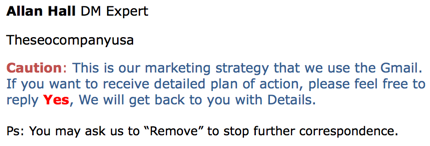ESPs are failing recipients
Over the last few years I’ve reduced the complaints I send to ESPs about their customers to almost nothing. The only companies I send complaints to are ones where I actually know folks inside the compliance desk, and I almost never expect action, I just send them as professional courtesy.

The sad fact is, many ESPs are really horrible about dealing with spam coming from their networks. The older, larger companies are often a jumble of poorly integrated technologies resulting from a decade of acquisition. More than a decade ago I sat at a MAAWG conference with the director of deliverability at one of the oldest ESPs. We were talking about their recent Spamhaus listings that I’d been hired to help address and their overall complaint processes. One of the issues was, due to multiple mergers and acquisitions, half of their abuse mail went to the wrong place and some of it was being thrown away.
This is an old story, but only as an example of how long this problem has been going on. Even now, companies retire domain names from receiving mail, but still have them littered throughout their email headers. They miss complaints, they miss notices and then they discover they and most of their customers have extensive delivery problems.
The newer companies are lean and agile and don’t think about investing in actual compliance work until they run face first into an escalated Spamhaus listing. Their solution to the problem is to throw machine learning at it, and try and come up with a way to programatically identify bad customers. The problem is this is a moving target and there’s nothing set and forget about it. Algorithms like this need to be constantly maintained and trained. May as well invest in the human element.
Of course, this is all about the customers sending mail through ESPs. But that’s not the only problem. There are any number of ESPs whose own marketing teams use spam. I cannot tell you the number of companies in the space who’ve decided to add me to their marketing list without bothering to ask me if I want to hear from them.
Just last month I started receiving mail from an ESP. “We’ve made an acquisition! We’re growing!” was the first message I received from them. I wasn’t sure what was going on so I contacted their abuse desk asking what opt-in data they have for me. The person I contacted was apologetic and said she’d chase it down. She also informed me I’d be removed from future emails.
A few days later I received an email telling me that they weren’t really sure where I opted-in, but that it was probably a page on their website that they no longer had up. This doesn’t sound right as the address was one I don’t enter into forms. If a form doesn’t take a tagged address, I use a gmail account. But, I want to give the company the benefit of the doubt so I treat it as solved and move on.
Three weeks later I get another email from the same ESP advertising an upcoming webinar. Again, I send mail pointing out that I was assured I’d been unsubscribed. This time my colleague responds and tells me that I signed up for their mailing list because I attended a conference with them in 2016.
I don’t even have words for how grossly inadequate this response is. If it’s true, which I don’t even know any more, it’s horrible marketing to wait 3 years to start mailing someone after acquiring their email address. But the incompetence doesn’t stop there. This was a conference I attended to speak on two different panels, both regarding deliverability and how not to send spam. As a speaker I don’t always visit the trade floor and if I do, I don’t hand out cards or ask for more information. In any case, I can say with quite a bit of certainty this company wasn’t at the trade show, as they announced this version of their name about 6 months after the conference.
Of course, this isn’t as unusual as it should be, one reason I’m not naming names. ESPs hire aggressive marketers who often send spam… er… “cold emails.” It still amounts to the same thing – an unending bombardment of unsolicited emails from companies who then turn around and ask to be added to my list of “good ESPs” that don’t allow purchased lists.
ESPs need to step up and stop allowing spam on their networks. This goes for customer mail and for their own mail. It’s long past time for them to invest in actual compliance desks and start actually requiring customers to send better mail.
